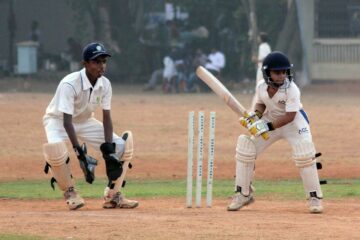![]()
Introduction:
According to the Competition Commission of India, a “Cartel includes an association of producers, sellers, distributors, traders or service providers who, by agreement amongst themselves, limit, control or attempt to control the production, distribution, sale or price of or trade in goods or provision of services.”
Components of Cartel
- An agreement
- It must be between competitors
- The agreement must restrict competition
Features of Cartel
- Agreement forming cartels can be formally written or informal or can be unwritten.
- Cartels involve secret conspiracies.
The object of forming Cartel[1]
- Price Fixing
- Output Restriction
- Market allocation
- Bid-rigging
The reason behind committing such an act of cartelization is to provide a fair distribution of shares amongst competing firms in the market. The search process includes fixing prices, allocation of sales, and productive activities among members. It also provides a guarantee of minimum profit to each member and agreements on the conditions of sale rebates discount and terms.[2] The companies blame the government rules as a reason for forming cartels as they have to take permission of state for any sort of change of prices. Also, it results in a price to the consumer that is higher than the competitive price. Cartels also sustain inefficient forms in an industry UN prevented the adoption of cost-saving technological advances that would result in lower prices.[3] Cartels result in higher prices and restricted supply harms the consumers.
Cartelisation of Beer Sales
The competition commission of India on September 24, 2021, has marked these three following leading companies indulged in the act of cartelization:
- United Breweries
- SAB Miller India (AB InBev)
- Carlsberg India Pvt Ltd
Brief Facts
A suo moto examination was started via a request dated October 31, 2017, as per the receipt of a lesser punishment application by Crown Beers India Pvt. Ltd. SABMiller India Ltd. revealing composed exercises with UBL and Carlsberg under the aegis of AIBA to adjust costs of beer and carry out value changes in the country. The Director-General (DG) led search and seizure procedure anywhere nearby of the Opposite Parties throughout the span of the request, after which UBL and Carlsberg documented mercy applications.
The parties allegedly engaged in price co-ordination in contravention of the provisions of section 3(3)(a) of the Competition Act, 2002 in the States of Andhra Pradesh, Karnataka, Maharashtra, Odisha, Rajasthan, West Bengal, National Capital Territory of Delhi and the Union Territory of Puducherry, in collectively restricting the supply of beer in the States of Maharashtra, Odisha and West Bengal in contravention of the provisions of section 3(3)(b) of the Act, and in sharing of the market in the State of Maharashtra as well as coordination with respect to the supply of beer to premium institutions in the city of Bengaluru in contravention of the provisions of section 3(3)(c) of the Act.[4]
Investigation by the DG
A request was passed by the Competition Commission of India in October 2017 guiding DG to lead a nitty-gritty examination in the said matter. In its examination report, the DG noticed that, in India, command over creation, conveyance, transportation, and tax assessment on liquor falls under the domain of the states and association regions. The DG saw that various states and association domains in India utilize one of the four significant course to-advertise models for larger dissemination and deal as follows:
- Corporation Model: The business is regulated by the State Government through a different public area organization or company that is entirely possessed by the State Government. This syndication organization is in charge of liquor valuing, dissemination, and retail (remembering for a brew). By drifting yearly tenders, the company gets larger from makers, either straightforwardly or through an office, and afterward offers it to clients through an appropriation organization.
- Auction Market Model: The significant state extract specialists close out the permit to sell alcohol (counting brew) in a particular topographical domain to an individual or organization consistently. The things are appropriated by the effective bidders’ retail outlets, which are either claimed by the actual bidders or by other private gatherings approved by the State Excise Authority to sell alcohol items.
- Open/Free Market Model: Beer makers have the opportunity to work with private merchants, who then, at that point, offer to private shops. Producers must, nonetheless, report their greatest retail value (MRP) and have it endorsed by the fitting government office. Lager producers have extensive adaptability with regard to setting their MRPs.
- Hybrid Model: This circulation market has qualities of both the corporation and open market models. To gain and convey alcohol items all through the district, the state government sets up its organization. It additionally gives wholesalers and retailers open licenses to sell the item all through the state.
The DG saw that larger producers were in normal contact with each other while making offers to organizations while researching hostile to cutthroat conduct during the cartel’s time frame (2007–October 2018). Moreover, they habitually teamed up to set costs for the brew they sold and examined evaluating procedures to acquire positive value corrections from state legislatures. Besides, it was found that the top administration of these organizations conveyed quarterly deals and deals information with each other as an observing apparatus to guarantee that everybody was following the ‘getting/arrangement.’ The DG further expressed that they, on the whole, chose the procedure to go against ominous strategies by stopping creation and conveyance in states where state legislatures expanded extract charge due or diminished the ex-bottling works cost or MRP of brew. The DG found AIBA’s association in the cartel through the proposal of value climbs and help of arrangements with extract specialists just as among the Opposite Parties’ senior administration comparable to estimating.
Contradiction of Section 3 of the Act
The Commission, concurring with the DG’s discoveries, led an autonomous state-by-state audit of the Opposing Parties’ enemy of serious conduct. The Commission put together its choice with respect to confirm procured by the DG about correspondence between Opposing Parties through true messages, individual messages, SMS messages, WhatsApp messages, and different means. Aside from value coordination and restricting or confining larger supply in different states or association domains, the DG found that UBL and SABMiller were in settlement on the acquisition of recycled bottles. The arrangements of the Competition Act, as per the Commission, don’t simply apply to end-customers of labor and products. Further, it was found that UBL and SABMiller plotted to build up limits and hold their particular pieces of the pie for the deal and supply of lager to Bengaluru’s select organizations.
The Commission depended on a few email interchanges presented by UBL and testimony articulations of different Opposite Parties’ authorities to presume that AIBA and the other Opposite Parties knew that joint portrayals to government specialists and conversations among themselves comparable to exchange limitation, cost increments, and different issues were infringing upon the Competition Act. The direct of the Opposite Parties were along these lines considered to be infringing upon areas 3(3)(a), 3(3)(b), and 3(3)(c) read with segment 3(1) of the Act. Then again, Crown Beers was viewed as in consistency (as it was anything but a functioning member in this cartel). As per area 48 of the Competition Act, four authorities from UBL and Ab InBev, six authorities from Carlsberg, and the Director-General of AIBA were seen as responsible for their separate organizations’ or alternately affiliations’ enemy of the cutthroat movement.
Order and Penalty
The penalty imposed by CCI on all the three companies was:
UBL was charged with approximately Rs 752 crore and Carlsberg India was fined rupees 121 crores. AIBA’s Penalty was given or a reduction of 100% in the penalty from a fine of rupees 6.25 Lac.
AB InBev has got a 100% reduction in the penalty because they have submitted evidence regarding the cartel formed by the companies. They also have explained the cartel formed by them. Shreds of evidence were given regarding the communication that has happened between the companies.
Conclusion
An economy can flourish provided that there are streamlined commerce and reasonable contest on the lookout. Unjustifiable rivalry rehearses like syndications; cartels, and so forth can impede the development of more modest firms and organizations, prompting lopsided development and advancement. Accordingly, CCI and Competition laws assume a critical part in the Indian economy. Nonetheless, the current period’s new improvements are presenting difficulties to the CCI. Steps should be taken by the commission so that both the little and huge firms exist together amicably on the lookout and that there is no strength of a couple of firms on the lookout.
The Commission has had the option to further develop its examination strategies to exhibit the presence of cartels on the lookout, and it is continually advancing to meet new obstacles in the unique economy. As far as the verification of cartelization, the Commission has developed from requiring direct proof to depending more on fortuitous proof. Be that as it may, with regards to the unwavering quality of insightful strategies, the Commission has far to go to find more settled purviews as far as speed and refinement. It has made an admirable showing of breaking down the DG’s report top to bottom in cases and successfully deciding cartel developments. The Commission has endeavored to deter cartels by forcing continuously enormous fines on cartel members. India’s opposition law statute is as yet in its earliest stages, yet it has exhibited noteworthy diligence in uncovering and rebuffing cartel cases. Subsequently, the Commission should be completely staffed, enabled, and fit for shielding customers’ and the country’s advantages from the adverse consequences of serious demonstrations.
References:
[1] Insights Editor, Competition Commission of India and Cartelization, Insights IAS, (September 27, 2021), https://www.insightsonindia.com/2021/09/27/competition-commission-of-india-and-cartelisation/ (last visited- 30/10/2021)
[2] The Editors of Encyclopaedia Britannica, Cartel, Britannica, March 09, 2020, https://www.britannica.com/topic/cartel (last visited- 24/10/2021)
[3] The Editors of Encyclopaedia Britannica, Cartel, Britannica, March 09, 2020, https://www.britannica.com/topic/cartel (last visited- 24/10/2021)
[4] Prashant Kumar, The Beer Cartel Case: A way forward for the CCI, India Corp Lawhttps://indiacorplaw.in/2021/10/the-beer-cartel-case-a-way-forward-for-the-cci.html?amp=1 (Last Visited- 10/11/2021)



0 Comments